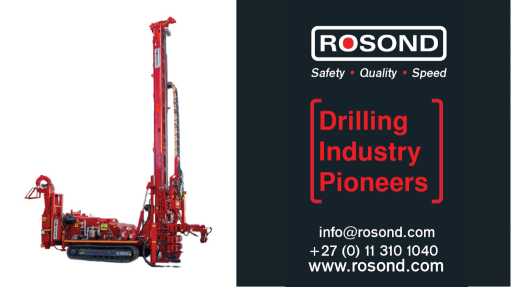New products aid compliance
Engineering, manufacturing, con- struction and maintenance services provider Steinmüller Africa boiler process group leader Warwick Ham says the company’s product offering positions it well to help South African companies meet stricter emissions standards because of its long-term establishment in the European market.
The company is expecting an upswing in the South African emissions controls market, driven by the Air Quality Act, which stipu- lates new emissions regulations that will come into effect in 2020.
The company is involved in the development of several technologies for cleaning the flue gases emitted from coal-fired power stations. Dust, sulphur oxides and nitrogen oxides are emitted when coal is burned to generate electrical power. Dust, produced as a result of the ash generated when coal is burned, can cause a number of health problems if inhaled, while emis- sions of sulphur oxides and nitrogen oxides can cause environmental problems such as acidic rain, which is damaging to infrastructure and the natural environment, Ham explains.
He adds that there are two dominant ways of removing the dust from the flue gases: either through an electrostatic pre- cipitator (ESP) or a fabric filter, also known as a bag filter.
ESPs are an older technology that charge the ash particles electrically before collect- ing them on positively charged plates in the flue gas. Although ESPs are still used by many plants, many companies have opted to install Pulse Jet Fabric Filters (PJFFs), which work in a similar way to a vacuum cleaner, except the ash is collected on the outside surface of several 6-m- to 12-m-long cylindrical bags rather than on the inside.
Flue gas flows through the bag material towards the inside, onwards through the induced draught fan to be released into the atmosphere through the stack. Once clog- ged, the bags are pulsed with a jet of compressed air (hence, the name Pulse Jet Fabric Filter) to shake the collected ash off the bag, and down into collecting hoppers, from where it is removed and taken to ash dumps.
“Both technologies, if designed correctly, can easily comply with the dust emissions limit of 50 mg of dust for each normal cubic metre of cleaned gas. This is comparable to one-fifth of a teaspoon of baby powder in a 3 m × 3 m × 2 m bedroom,” he notes.
South African coal typically contains a small percentage of sulphur, and sulphur oxides generated while coal is being burnt can be removed downstream of the combustion process by adding limestone in a wet absorption process. In this case, limestone dissolved in water is sprayed through the flue gas in a flue gas desulphurisation plant comprising a giant cylindrical tank. The limestone reacts with the sulphur oxides to form calcium sulphite, which can be used to make gypsum board, commonly used as ceiling boards. The plant typically removes more than 99% of the sulphur oxides in the flue gas.
Ham explains that, ideally, some of the sulphur could be removed before the coal is burned; however, although several mines wash the coal before burning, as a method of separating good quality from bad quality coal, this is a difficult and costly exercise.
“You will spend more money trying to get [sulphur] out of the fuel than out of the flue gas; that’s why most companies opt for the latter option,” concurs Steinmüller Africa process engineer Dr Ronald Abbas.
Nitrogen oxides are removed using either primary or secondary measures. Primary measures involve designing the combustion system, including the coal mills, classifiers and coal burners, in such a way that the formation of nitrogen oxides during combustion is reduced. To do this, the temperature of the coal flame is reduced by delaying the mixing of air and coal in each flame.
Secondary measures, named so because they occur after the nitrogen oxides are formed, can be applied through processes called selective catalytic reduction or selective noncatalytic reduction.
During this process, ammonia reacts with nitrogen oxides in the flue gas at temperatures between 200 °C and 420 °C in the presence of a catalyst to form water and nitrogen gas. Typically, 90% of nitrogen oxides are removed this way.
Ham points out that emissions control is costly for businesses, and they are thus unlikely to implement such measures unless they are legislation-driven. With about 85% of South Africa’s electrical power being generated by coal-fired power stations, the new emissions standards in South Africa present a valuable opportunity for the company to offer its expertise to coal-fired power stations that are trying to achieve compliance with the new regulations.
Even when the new regulations come into effect in 2020, South Africa’s emissions standards will still not be on par with international standards, notes Ham. “For instance, our regulation for a power station boiler is 750 mg of nitrogen oxides per normal cubic metre of flue gas at 10% oxygen content . . . in Europe, the limit for a similar size power plant is 200 mg per normal cubic metre at 6% oxygen content. So, although we are now regulating these emissions, our limits are far less stringent than other countries.”
However, he notes that the context of the country needs to be taken into account when evaluating these standards.
“It’s better to supply an indivi- dual electricity in his or her home to cook or heat with, than that person cooking or heating over an open fire and generating . . . harmful emissions . . . [which they will directly inhale] . . . even if that means the power stations are subjected to slightly more lenient emissions regulations in their operations in order to provide that electricity. The by-products of the power station will still be much cleaner than an open fire,” Ham concludes.
Article Enquiry
Email Article
Save Article
Feedback
To advertise email advertising@creamermedia.co.za or click here
Comments
Press Office
Announcements
What's On
Subscribe to improve your user experience...
Option 1 (equivalent of R125 a month):
Receive a weekly copy of Creamer Media's Engineering News & Mining Weekly magazine
(print copy for those in South Africa and e-magazine for those outside of South Africa)
Receive daily email newsletters
Access to full search results
Access archive of magazine back copies
Access to Projects in Progress
Access to ONE Research Report of your choice in PDF format
Option 2 (equivalent of R375 a month):
All benefits from Option 1
PLUS
Access to Creamer Media's Research Channel Africa for ALL Research Reports, in PDF format, on various industrial and mining sectors
including Electricity; Water; Energy Transition; Hydrogen; Roads, Rail and Ports; Coal; Gold; Platinum; Battery Metals; etc.
Already a subscriber?
Forgotten your password?
Receive weekly copy of Creamer Media's Engineering News & Mining Weekly magazine (print copy for those in South Africa and e-magazine for those outside of South Africa)
➕
Recieve daily email newsletters
➕
Access to full search results
➕
Access archive of magazine back copies
➕
Access to Projects in Progress
➕
Access to ONE Research Report of your choice in PDF format
RESEARCH CHANNEL AFRICA
R4500 (equivalent of R375 a month)
SUBSCRIBEAll benefits from Option 1
➕
Access to Creamer Media's Research Channel Africa for ALL Research Reports on various industrial and mining sectors, in PDF format, including on:
Electricity
➕
Water
➕
Energy Transition
➕
Hydrogen
➕
Roads, Rail and Ports
➕
Coal
➕
Gold
➕
Platinum
➕
Battery Metals
➕
etc.
Receive all benefits from Option 1 or Option 2 delivered to numerous people at your company
➕
Multiple User names and Passwords for simultaneous log-ins
➕
Intranet integration access to all in your organisation


















